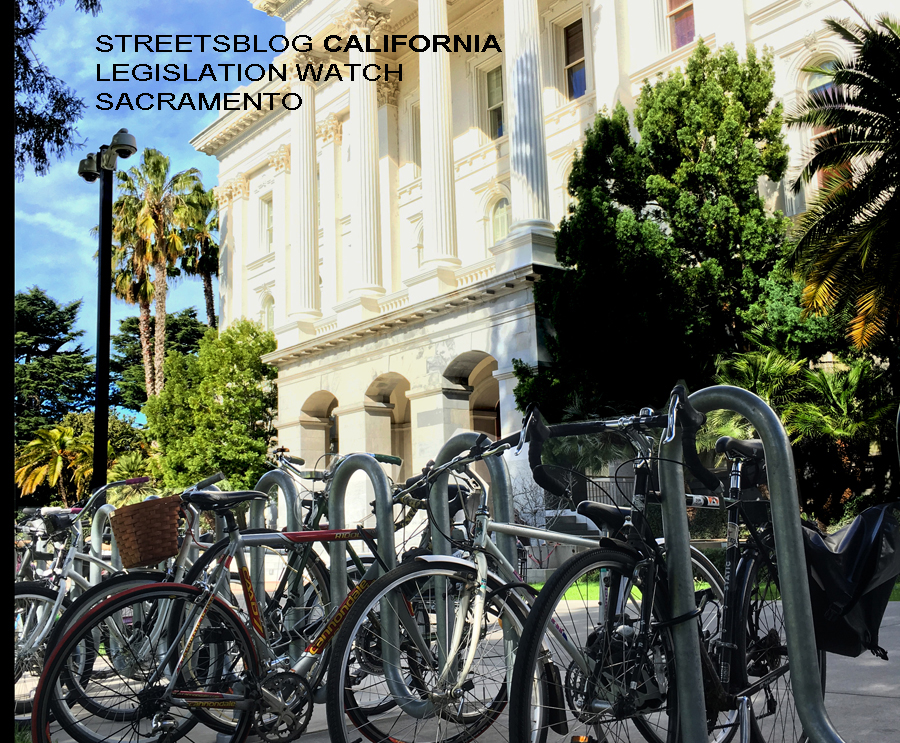Things are moving quickly here at the end of the legislative session. There are only a few days left for bills to pass out of policy committees and onto the floor. Then all bills must be passed on to the Governor by September 10.
This week already several bills of note have advanced, as noted below.
Slow Streets Could Be Made Permanent
AB 773 Adrin Nazarian (D-LA) introduced A.B. 773 in part to overcome a problem that arose when L.A. introduced "slow streets" at the beginning of the pandemic to give people safe places to get out of the house and recreate while maintaining safe distance from each other. The California vehicle code prohibits cities from closing streets except under very specific circumstances, and objections from some quarters caused the LADOT to scale back its program. A.B. 773 adds more to those specific circumstances under which a street closure is allowed, and could allow one to be permanent if cities determine "that closure or traffic restriction is necessary for the safety and protection of persons using the closed or restricted portion of the street." Cities must also conduct outreach and use clear signage to designate the closure.
Beyond just retaining pandemic-induced safe streets, this could be very useful for advocates to make streets safer for people on foot, on bike, and taking transit.
A.B. 773 passed the Senate on Monday, 30-5. It will now go back to the Assembly, where it will likely be approved, and from there head to the governor's desk.
"Light-Touch Density" Streamlined
Currently, it is illegal to build more than one unit of housing per parcel in areas zoned for single-family housing. This has led to a focus on bigger, sprawlier housing developments than otherwise may have happened, with accompanying increases in housing costs, driving, emissions, and traffic congestion. Senator Scott Wiener's bill, S.B. 10, is a focused attempt to achieve one slice of the zoning reform housing advocates say is necessary to increase the supply of housing.
The bill would allow communities to pass an ordinance allowing up to ten units per parcel within single-family zones located near transit or within existing urban areas. The bill cuts the approval process and streamlines - or sidesteps - California Environmental Quality Act (CEQA) requirements, "something usually reserved for sports arenas," to steal a sadly accurate line from Scott Lay of Around the Capital.
There has been pushback on the bill, much of it couched in support of local control: locals don't want to cede zoning power to the state. Amendments added at various points address some of their concerns - for example, if a city wants to pass an ordinance under the bill that would rezone parcels, the ordinance must pass with a 2/3 vote.
There also remain concerns that bypassing CEQA could have unintended negative consequences, and racial and environmental justice advocates say that the bill needs stronger anti-displacement provisions.
The roll call vote on the Assembly floor took some time, but ultimately it passed 44-12, with 23 abstentions. It was not a partisan vote, unlike most of the votes in this legislature; ten of the "no" votes were from Democrats, and eight Republicans voted in favor. Also, five Democrats were out ill, including Kevin McCarty (D-Sacramento), who was recently diagnosed with Covid despite being fully vaccinated.
A related bill from Senate President Toni Atkins, S.B. 9, would make it much easier to build duplexes in California, something that used to be much easier than it is under current zoning restrictions. That bill will be up for a vote in the Assembly in the coming days.
Many other bills - including ones on setting speed limits (A.B. 43 from Asm. Laura Friedman), decriminalizing jaywalking (A.B. 1238 from Asm. Phil Ting), and allowing cameras on buses to enforce lane restrictions (A.B. 917 from Asm. Bloom) - are scheduled for hearings this week. Also, the Idaho Stop or Safety Stop bill, A.B. 122 from Tasha Boernor Horvath, is awaiting a vote on the Senate floor and could benefit from calls to your representatives.






